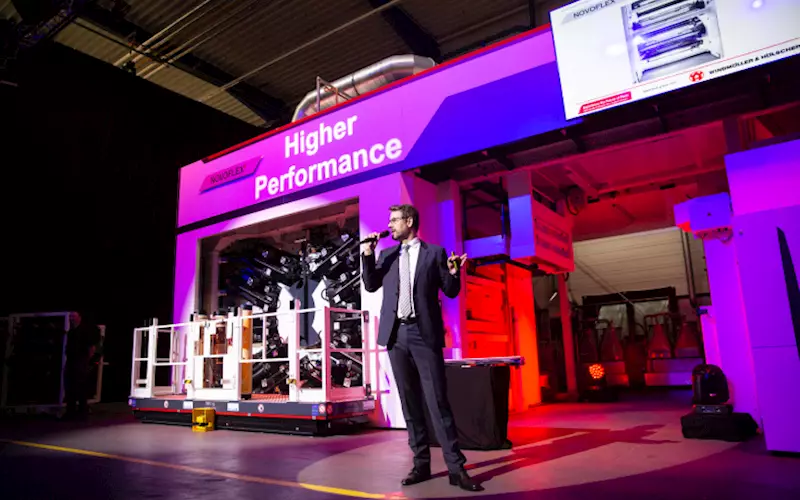W&H launches Novoflex II at open house
Windmöller & Hölscher launched the Novoflex II during an open house held on 27 and 28 March 2019. At the event, titled ‘Experience the future of flexo’, more than 500 guests witnessed the live demo of the Novoflex II as it switched between two images at a speed of 600-m/min.
08 Apr 2019 | By Abhishek Muralidharan
Hermann Veismann, head of the printing division at W&H, said, “We wanted to demonstrate that flexo printing, with its high-quality and proven process reliability with modern W&H machines and an optimised overall process, enables enormous flexibility and speed. The reactions of the guests showed us that we were successful."
The jobs during the demonstration were produced with a high-line graphics count with particularly hard leading edges of plates.
The conversion from image to the finished print was executed in just three hours, with the help of Kodak Flexcel NX Ultra solution, which produced the ready-to-print plates in less than one hour.
“With its clearly structured printing unit, automatic storage and sleeve ejection system, Novoflex II enables a sleeve change in just a few minutes. The easy automation modules ensure fast impression and register setting in less than 90 seconds,” Veismann added.
At the open house, W&H also highlighted its flagship product, Miraflex II, in two versions — the dual-port and a new compact single-port that requires less floor space.
Veismann said, “Thanks to the face-to-face winder configuration on the single-port, there is a central loading and unloading area for the winder, which shortens web and operator distances. In addition to a pure 4C process job, the single-port showed further developments in the fully-integrated Vision print monitoring system designed in-house by W&H.”
In addition to it, W&H used the Miraflex II versions for a direct comparison of CMYK colour separation with multicolour separation.
“While the single port printed in 4C, the dual port worked with a fixed 7C colour palette. This direct system comparison showed the advantages and possibilities offered by the consistent use of an extended colour gamut,” added Veismann.
Apart from these machines, the Information and Diagnostics Center (IDC) demonstrated the use of digital data glasses during live troubleshooting.
Explaining the data glasses, Christian Brönstrup, head of IDC, said, “A customer who needs technical support puts on the headset with an integrated camera and connects to an expert from the IDC. The expert sees everything the customer sees in real time and can help him quickly and easily. In the medium term, the digital services will be used in both service support and training.”












 See All
See All